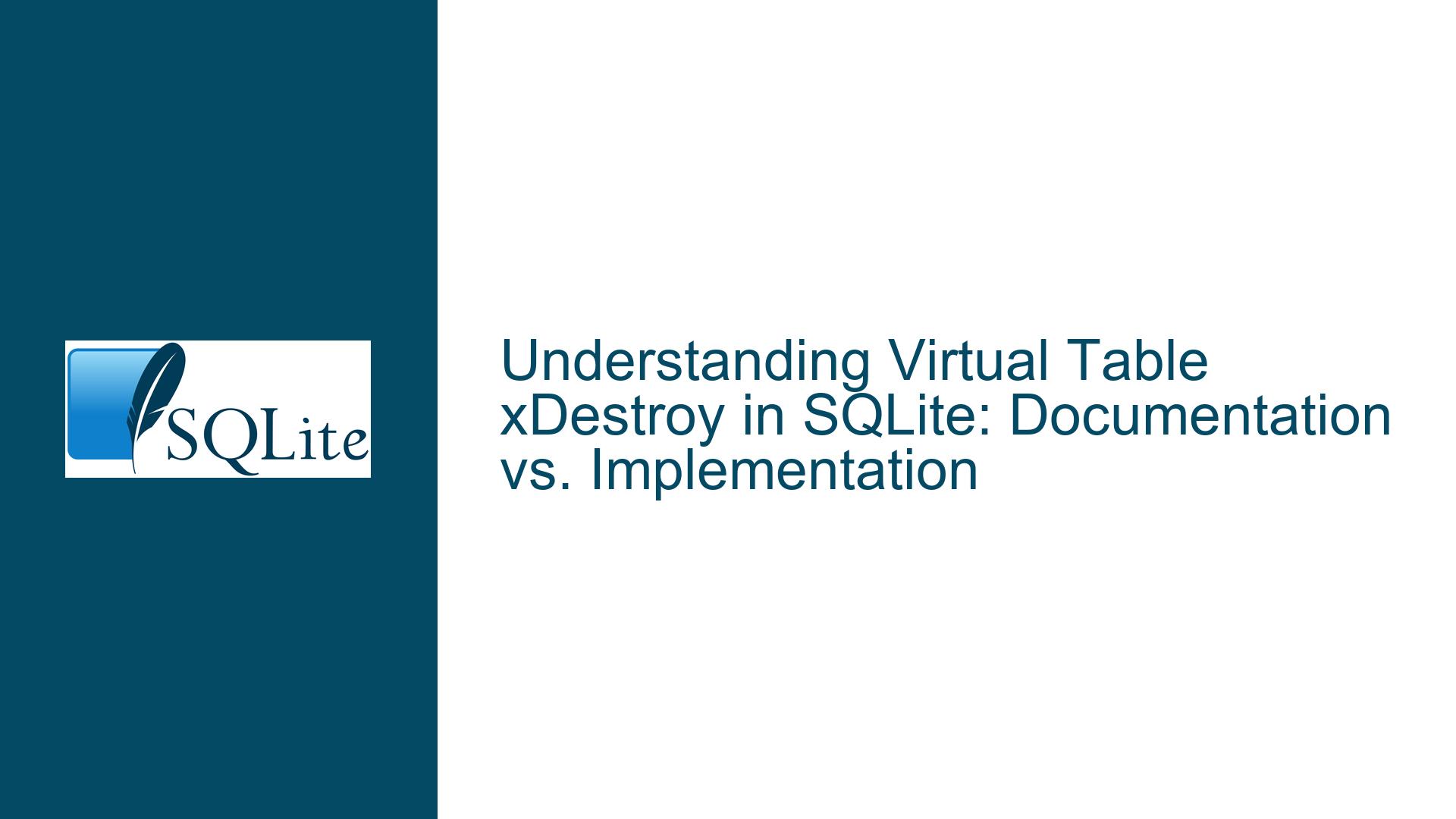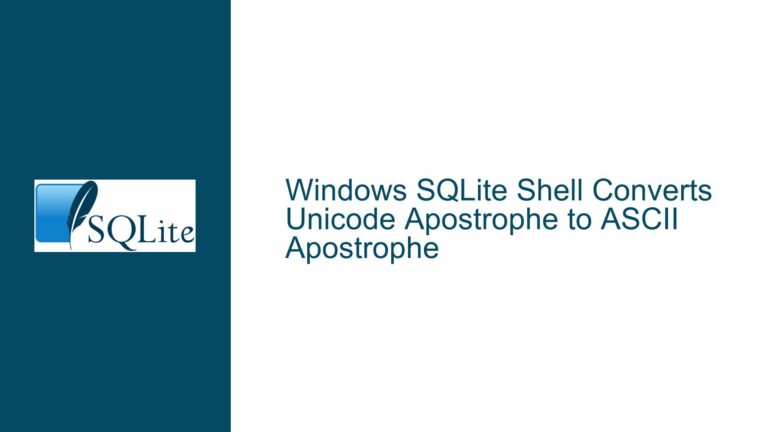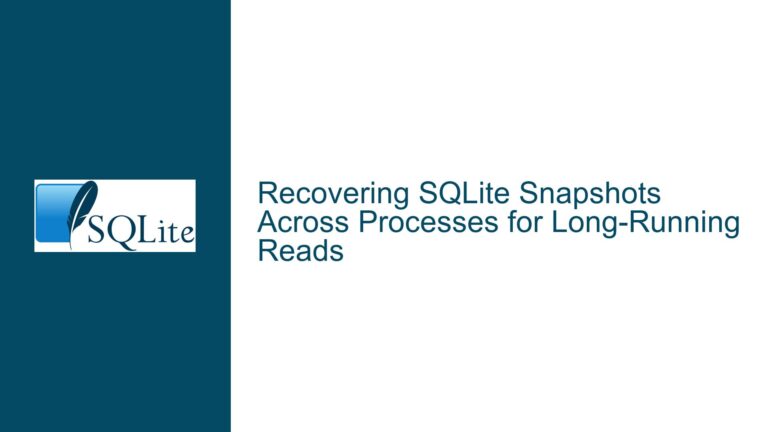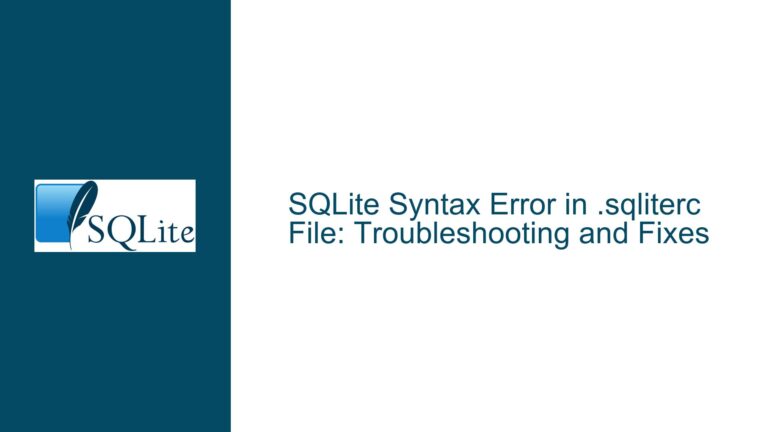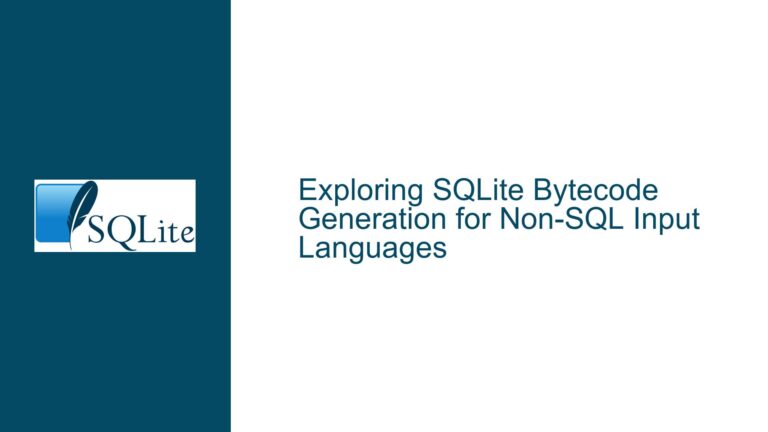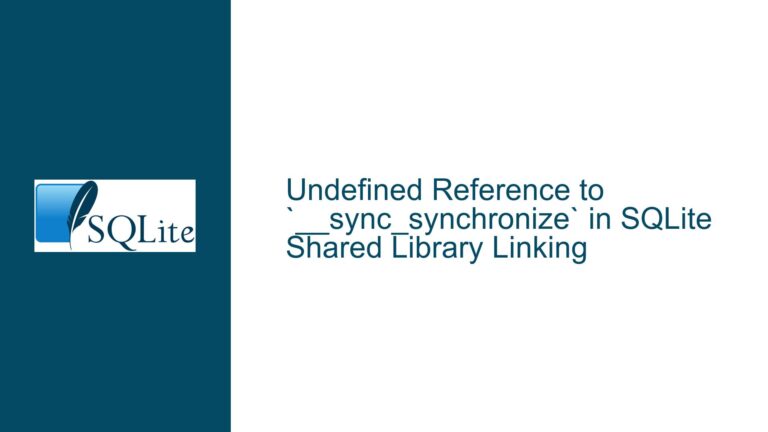Virtual Table xDestroy in SQLite: Documentation vs. Implementation
Virtual Table xDestroy: Documentation Requirements and Implementation Nuances
The xDestroy method in SQLite’s virtual table implementation is a critical component that ensures proper cleanup when a virtual table is dropped. According to the official SQLite documentation, the xDestroy method is described as an absolute requirement for all virtual table implementations. However, a closer examination of specific implementations, such as the series.c module, reveals that this is not universally true. This discrepancy raises questions about the accuracy of the documentation and the practical nuances of virtual table implementations, particularly for eponymous-only virtual tables where the xCreate method is NULL. This post delves into the intricacies of the xDestroy method, explores the potential causes of this inconsistency, and provides a detailed troubleshooting guide to address the issue.
Eponymous-Only Virtual Tables and the Absence of xDestroy
Eponymous-only virtual tables are a special category of virtual tables in SQLite where the xCreate method is explicitly set to NULL. These tables are unique because they do not require an explicit creation step; instead, they are automatically instantiated when referenced in a query. The absence of the xCreate method implies that the virtual table is not tied to a specific schema or database object, and thus, its lifecycle management differs from traditional virtual tables.
The SQLite documentation suggests that the xDestroy method is mandatory for all virtual table implementations. However, in the case of eponymous-only virtual tables, this requirement appears to be relaxed. For instance, the series.c module, which implements an eponymous-only virtual table, does not include an xDestroy method. This omission is logical because eponymous-only virtual tables do not persist in the database schema and do not require explicit cleanup when the database is closed or the table is dropped. The absence of xDestroy in such implementations highlights a gap between the documentation and real-world usage.
The core issue here is the lack of clarity in the SQLite documentation regarding the necessity of the xDestroy method for eponymous-only virtual tables. While the documentation implies that xDestroy is universally required, practical examples demonstrate that this is not the case. This inconsistency can lead to confusion for developers who rely on the documentation to implement virtual tables, especially when working with eponymous-only variants.
Potential Causes of the Documentation-Implementation Discrepancy
The discrepancy between the SQLite documentation and the actual implementation of virtual tables, particularly regarding the xDestroy method, can be attributed to several factors. One possible cause is the evolution of SQLite’s virtual table API over time. As SQLite has grown and new features have been added, the documentation may not have been updated to reflect the nuances of newer implementations, such as eponymous-only virtual tables. This lag in documentation updates can result in outdated or incomplete information being presented as authoritative.
Another potential cause is the distinction between traditional virtual tables and eponymous-only virtual tables. Traditional virtual tables are created explicitly using the xCreate method and are tied to a specific database schema. These tables require an xDestroy method to ensure proper cleanup when they are dropped. In contrast, eponymous-only virtual tables are transient and do not persist in the schema, making the xDestroy method unnecessary. The documentation may not adequately differentiate between these two types of virtual tables, leading to the impression that xDestroy is universally required.
Additionally, the series.c module, which serves as a reference implementation for eponymous-only virtual tables, may have influenced the perception that xDestroy is optional. Since this module is widely used and well-regarded, its omission of the xDestroy method could have set a precedent for other developers, further contributing to the inconsistency between the documentation and real-world usage.
Troubleshooting Steps, Solutions, and Fixes
To address the discrepancy between the SQLite documentation and the implementation of the xDestroy method in eponymous-only virtual tables, developers can take several steps. First, it is essential to understand the distinction between traditional virtual tables and eponymous-only virtual tables. Traditional virtual tables require both xCreate and xDestroy methods to manage their lifecycle, while eponymous-only virtual tables do not require xCreate and, by extension, do not require xDestroy.
For developers implementing eponymous-only virtual tables, the absence of the xDestroy method is acceptable and aligns with the behavior of reference implementations like series.c. However, it is crucial to document this decision clearly in the code to avoid confusion for other developers who may review or maintain the implementation. Including comments that explain the rationale for omitting xDestroy can help bridge the gap between the implementation and the documentation.
For those who rely on the SQLite documentation, it is important to recognize that the documentation may not always reflect the latest developments or nuances of the API. In cases where the documentation appears to conflict with practical examples, developers should consider consulting the source code of reference implementations, such as series.c, to gain a deeper understanding of the intended behavior. Additionally, engaging with the SQLite community through forums or mailing lists can provide valuable insights and clarification on ambiguous or outdated documentation.
To improve the situation in the long term, developers can contribute to the SQLite documentation by submitting updates or clarifications that reflect the current state of the API. For example, adding a note to the virtual table documentation that explicitly states the xDestroy method is not required for eponymous-only virtual tables would help prevent confusion. This contribution could be made through the official SQLite documentation repository or by raising the issue in the SQLite forum.
In summary, the discrepancy between the SQLite documentation and the implementation of the xDestroy method in eponymous-only virtual tables stems from a lack of clarity in the documentation and the unique nature of eponymous-only virtual tables. By understanding the distinction between traditional and eponymous-only virtual tables, consulting reference implementations, and contributing to the documentation, developers can navigate this issue effectively and ensure their implementations align with best practices.
